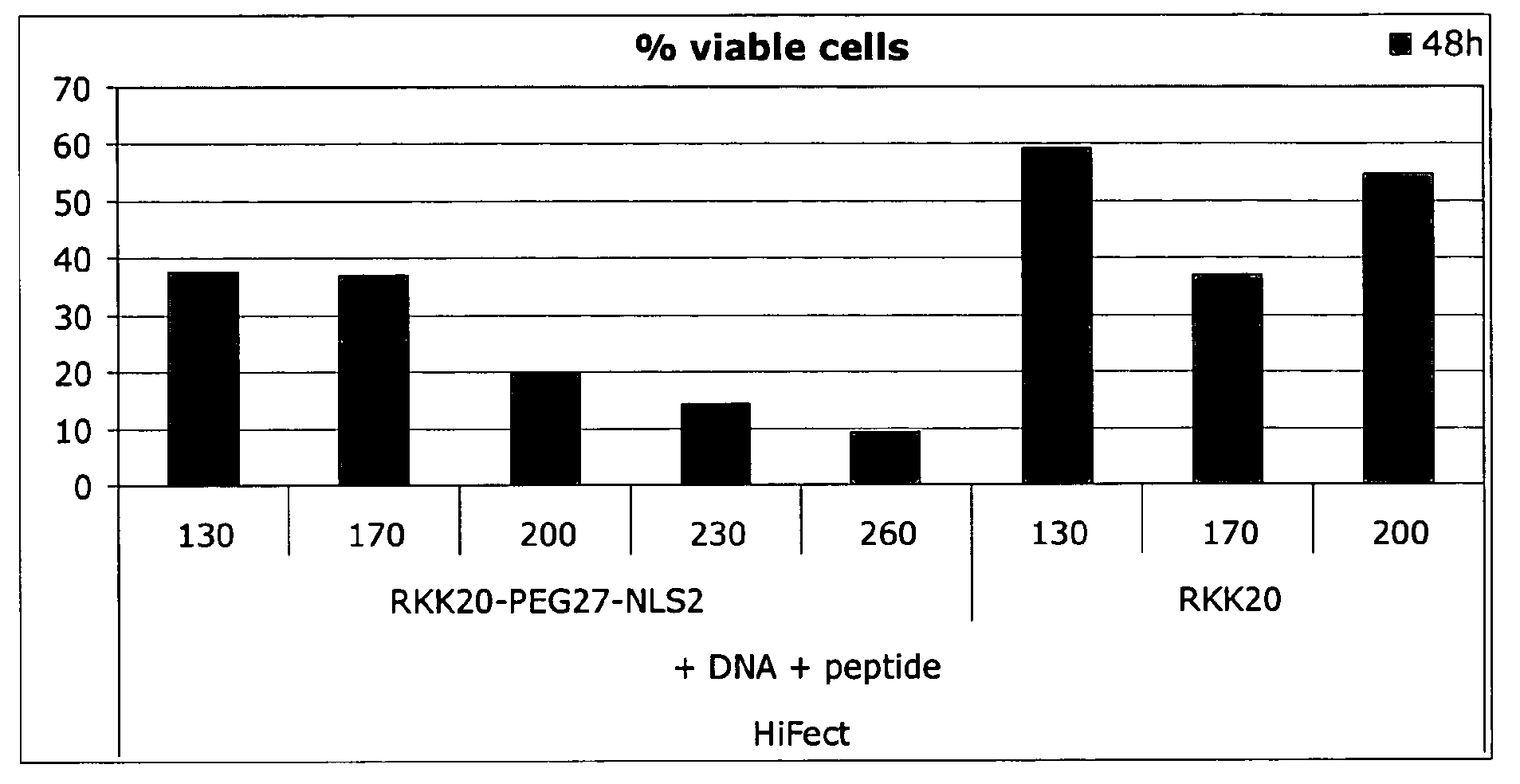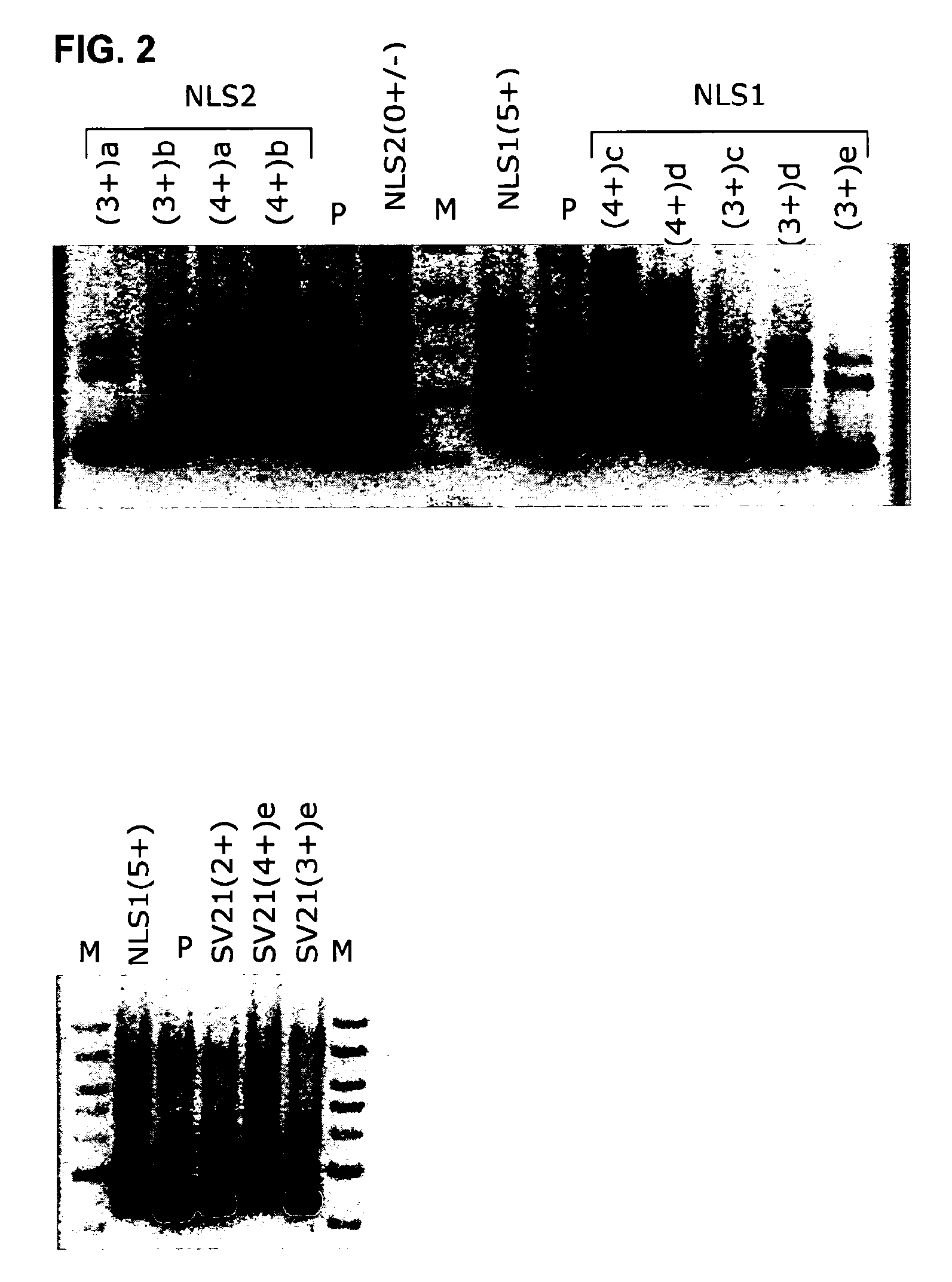Nuclear transport agent and method for producing said agent
a technology of transport agent and nucleus, applied in the field of transport agent, can solve the problems of affecting the function of the signal for the nuclear transport machinery, the complexity and cost of synthesis of a 39 amino acid peptide, and the less efficient of non-classical nls in mediating nuclear transport, etc., and achieve the effect of efficient transport of nucleic acids
- Summary
- Abstract
- Description
- Claims
- Application Information
AI Technical Summary
Benefits of technology
Problems solved by technology
Method used
Image
Examples
Embodiment Construction
1) Peptide Mediated Electrophoretic Mobility Shifts of DNA Upon Binding to Peptide
[0057]DNA interacting unspecifically with peptides through positively charged amino acids may mask positively charged nuclear localisation sequences (NLS) and interfere with their function in nuclear transport. In order to demonstrate that peptides with a positive net charge form higher molecular weight complexes with DNA, peptides bearing an NLS and additional negatively charged amino acids were tested for forming complexes with DNA.
[0058]Peptides were synthesized by F-moc-Chemistry and HPLC-purified to 95% purity. The carboxyl-group at the C-terminus was amidated and the N-terminal amino-group was actylated, in order to eliminate additional charges.
[0059]Sequences were the following:
NLS-1(5-fold positively charged, SEQ ID NO: 1)GSGSPKKKRKVGSGSV40 large T-antigen core NLS (PKKKRKV)with arbitrarily chosen flanking amino acids(glycine and serine)NLS-2(no net charge, SEQ ID NO: 2)EEDTPPKKKRKVEDSV40 large...
PUM
| Property | Measurement | Unit |
|---|---|---|
| Electric charge | aaaaa | aaaaa |
| Acidity | aaaaa | aaaaa |
| Transport properties | aaaaa | aaaaa |
Abstract
Description
Claims
Application Information
 Login to View More
Login to View More - R&D Engineer
- R&D Manager
- IP Professional
- Industry Leading Data Capabilities
- Powerful AI technology
- Patent DNA Extraction
Browse by: Latest US Patents, China's latest patents, Technical Efficacy Thesaurus, Application Domain, Technology Topic, Popular Technical Reports.
© 2024 PatSnap. All rights reserved.Legal|Privacy policy|Modern Slavery Act Transparency Statement|Sitemap|About US| Contact US: help@patsnap.com










